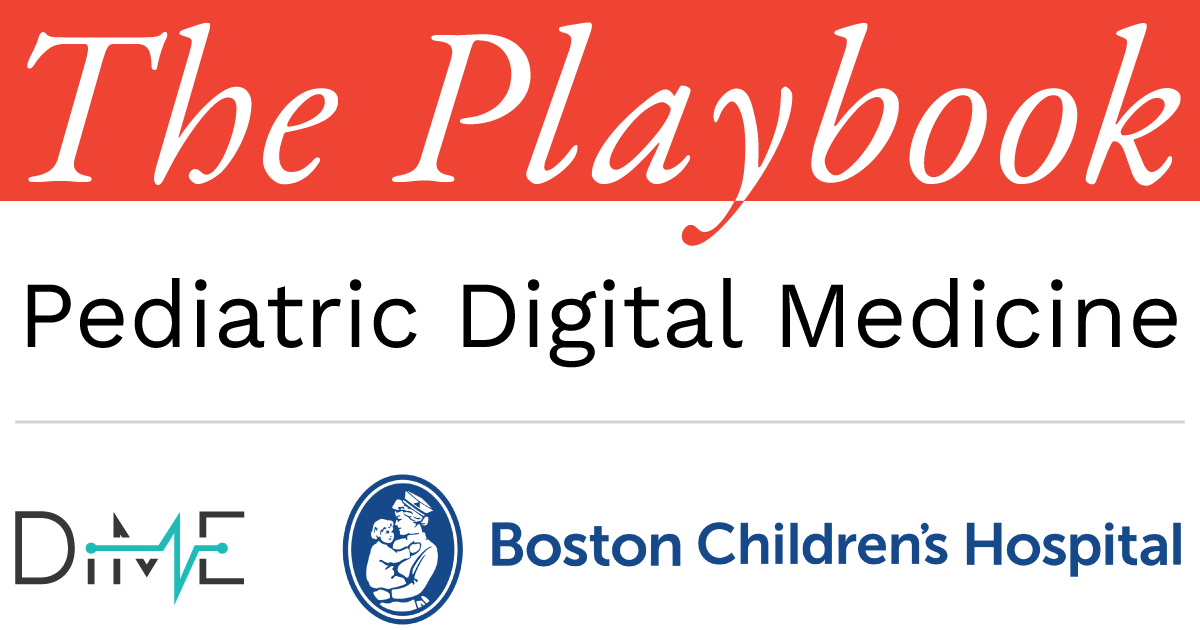
Chapter 4 – Section 4
Data collection

Challenges in pediatrics present numerous opportunities for DHTs. In this section, you will learn from our project team experts on how to implement digitally enabled, patient-centered data collection methods.
Longitudinal data collection is difficult in a pediatric population
Consistent, standardized data collection methods deliver more comprehensive datasets that allow for greater innovation and enhanced impact of clinical trials. However, developmental variability, caregiver dynamics, and other individualized needs and values of the pediatric population present unique challenges to optimizing clinical trial data collection. Challenges include:
Engagement
Maintaining engagement and communication with parents and children throughout a trial is important. Low engagement and inadequate communication methods often lead to discontinued participation and incomplete datasets.
Data collection complexity
Collecting accurate and complete data from varied environments, like home and school, or from different reporters (clinicians, caregivers, patients, etc.) can be challenging. The process can also be burdensome and inefficient for participants and caregivers.
Longitudinal collection
Ensuring accurate and comprehensive long-term data collection is a major challenge simply in terms of children’s development. High attrition rates and low adherence pose additional problems for successful longitudinal trials.
Caregiver involvement
Trials often rely on parents or guardians to ensure trial adherence and compliance, which can be affected by their availability, willingness, and understanding of the study. Moreover, caregiver’s access and ownership over their child’s data may change over time and thereby complicate data collection.
DHTs offer solutions to these challenges
Wearables and mobile apps can facilitate continuous monitoring of symptoms and daily activities, providing a richer data set than periodic clinical visits alone. By integrating into daily lives of participants, these DHTs help capture meaningful changes in a patient’s condition that might be missed otherwise. They can also:
Improve retention and adherence
By providing reminders, interactive interfaces, and gamification elements, DHTs can help keep children engaged.
Adjust to developmental changes
Wearable technologies and sensors can adapt to the child’s growth, providing consistent and accurate data across different developmental stages.
Improve data quality
Continuous data collection reduces fragmentation and ensures reliable, personalized measurements.
Balance caregiver involvement
Caregiver roles and access to data change over time. Consider providing tools to track a child’s participation, enhancing their involvement and support throughout the trial when appropriate. It is also possible to build in various types of access controls to ensure caregivers are appropriately involved and have access only to the information they are legally privileged to and/or that their children wish them to have.
Read the FDA’s guidance document for more information: Digital Health Technologies for Remote Data Acquisition in Clinical Investigations (December 2023).
Streamlining data collection in pediatric trials

- Conduct pilot studies to test and refine data collection protocols, ensuring they are feasible and effective in minimizing bias prior to full-scale deployment in a trial.
- Standardized protocols and outcome measures that are adaptable to different ages and developmental stages are crucial for validation and comparison across datasets.
- Implement rigorous data quality control measures, including automated checks for: inconsistencies, missing data, and anomalies.
- Establish mechanisms for ongoing feedback from children and caregivers to identify areas for improvement in the validation process. Use this feedback to refine protocols, devices, and algorithms continuously.
- Caregivers’ presence and behavior can influence how children interact with digital devices, which can alter their natural responses. Ensure that caregivers’ roles are clearly communicated and operationalized in the trial.
Supporting patients & caregivers in trials

- Accessibility: Make sure your technology is easy to use for people of all ages, including those with limited digital literacy. Interfaces should be intuitive and accessible, with clear instructions.
- Form factor: When using physical devices, ensure that they are appropriately designed and developed to collect measures on children of different ages and physical stages.
- Customization: Allow for personalization to cater to individual needs, such as adjustable text size, language options, and audio-visual aids.
- Initial training: Provide thorough onboarding for both the child and caregivers, including live demonstrations, video tutorials, and accessible training or troubleshooting materials.
- Ongoing support: Offer continuous support through multiple channels, such as a helpline, web-based chats, or dedicated support teams, to address any technical issues or concerns.
Learn more about developing fit for purpose DHTs here.
- Age-appropriate materials: Provide educational content that is appropriate for the patient’s age and developmental level, ensuring that both the child and caregiver understand their roles in the trial. Learn more about how children’s needs change as they develop here.
- Interactive tools: Use interactive tools such as videos, quizzes, and infographics to explain complex concepts in a way that is engaging and easy to understand.
- Data protection: Implement robust data security measures to protect patient information. Comply with regulations like HIPAA, and communicate these protections clearly to participants.
- Consent management: Provide an easy informed consent processes, allowing participants to understand their rights and control over their data.
- Provide clear options for opting in or out of specific data-sharing practices.
- Utilize e-consent platforms to present interactive, engaging, and age-appropriate consent information.
Health Insurance Portability and Accountability Act (HIPAA):
An Act of Congress that outlines the lawful use and disclosure of protected health information (PHI) in the United States. HIPAA compliance is regulated by the Department of Health and Human Services (HHS) and enforced by the Office for Civil Rights (OCR).
What is the ROI of utilizing digital endpoints in pediatric clinical trials?
Value from faster study completion and earlier access to new therapies for children
In clinical development, validating digital endpoints can take years and cost a lot up front. However, this validation is essential for them to be accepted as official endpoints in phase 3 clinical trials.
Digital endpoints tend to be more sensitive and provide richer information—think less variability between patients, more data points, and a broader range of information over time. This quality means researchers can gather important clinical data with a smaller study sample, leading to quicker study completion and earlier access to new therapies for children.
For example, using digital sensors to track comprehensive movement in rare diseases like Duchenne muscular dystrophy (DMD) could reduce the sample size for a phase 3 study from 120 patients to just 40. If we estimate study costs for rare diseases at $1 million per patient, that’s a potential saving of about $80 million.
Overall, better and more sensitive digital endpoints typically result in smaller study sizes and lower development costs.
Value from new digital measurements and drug development
Some digital endpoints are designed to track new digital measurements and symptoms. For instance, innovative digital devices that measure whole-brain electroencephalograms (EEGs) can accurately detect subclinical seizures, like those seen in absence epilepsy. These new digital measurements open the door to developing new drugs tailored for these conditions.
Value from improved real-world symptom assessment and clinical decision-making
Digital endpoints are designed to provide more performant and objective assessments of digital measurements and symptoms in daily life. For instance, these tools can precisely track the number of seizures a patient experiences, enabling doctors to make more informed decisions about starting or adjusting therapies. Such endpoints are critical for generating real-world data (RWD), which plays a key role in drug access after development. With the growing use of pay-for-performance access models—where treatment availability depends on measurable outcomes—reliable digital endpoints ensure that patients receive effective therapies more quickly, demonstrating their value in real-world settings.
Learn more about the net financial benefits of digital endpoints from DiMe’s journal club.

Key insights
Assessing the net financial benefits of employing digital endpoints in clinical trials
This study demonstrates the significant financial value of digital endpoints in clinical trials, showing that despite high initial costs, the return on investment (ROI) is substantial. Phase 2 trials saw expected net present value (eNPV) increases from $2.2 million to $3.3 million, and Phase 3 trials ranged from $27 million to $40 million. The eNPV framework is widely used in pharmaceuticals and other industries to assess the financial viability of investment projects. The study emphasizes the potential benefits of precompetitive collaborations to reduce costs, and the importance of continuous data collection for expanding digital endpoint applications. Ultimately, digital endpoints improve trial efficiency, reduce costs, and can accelerate patient access to treatments.




